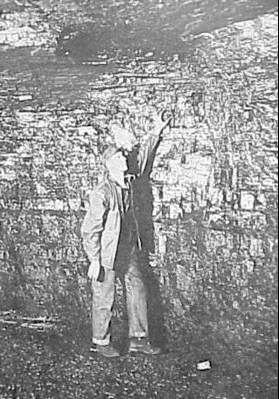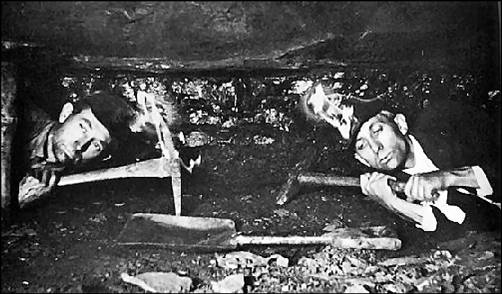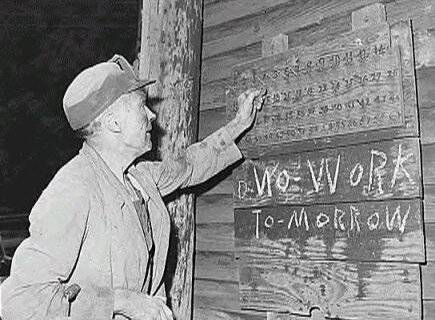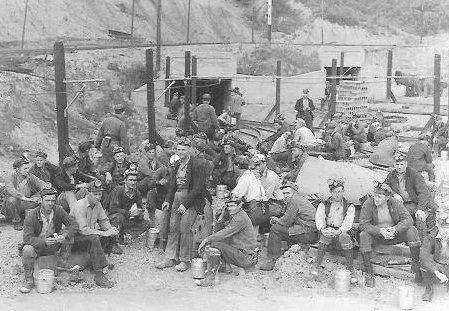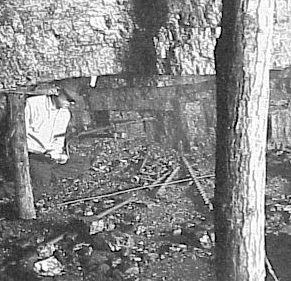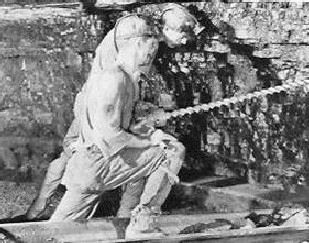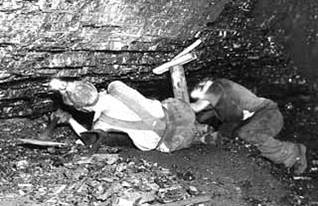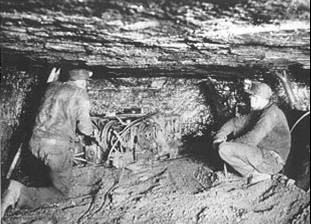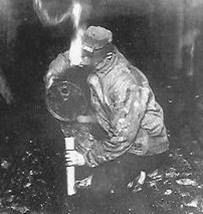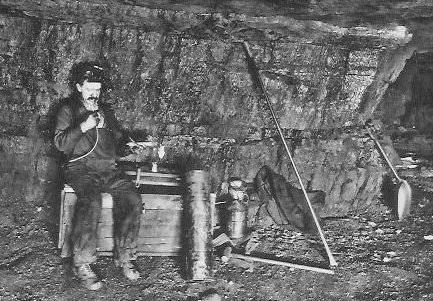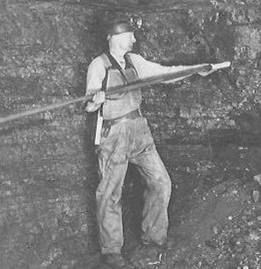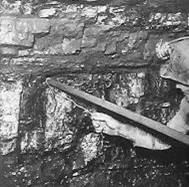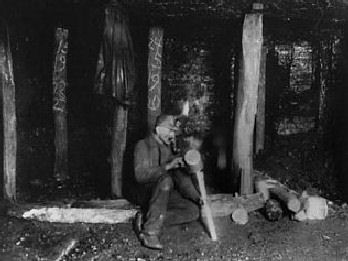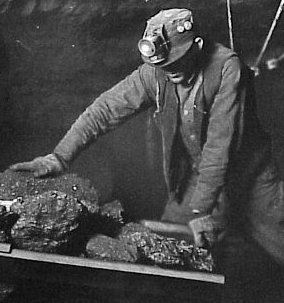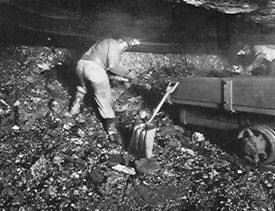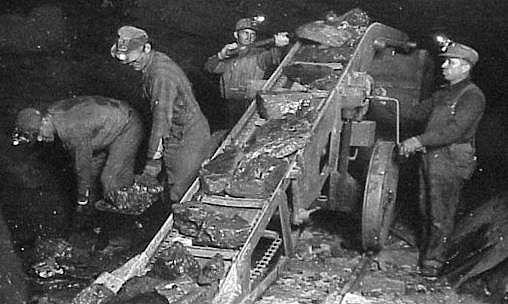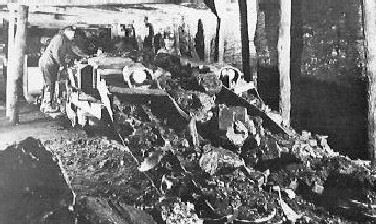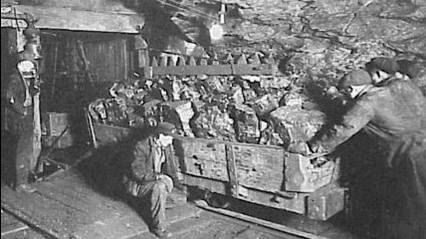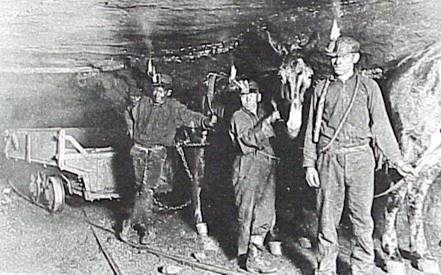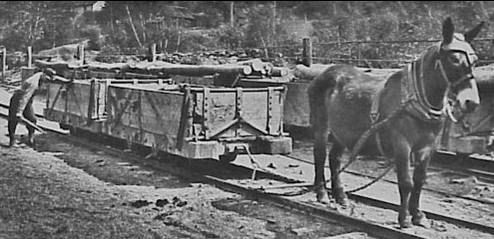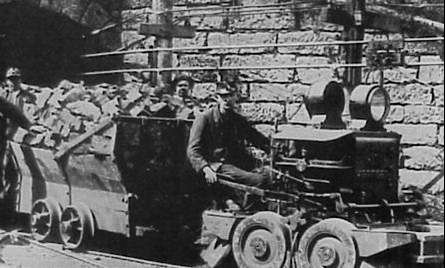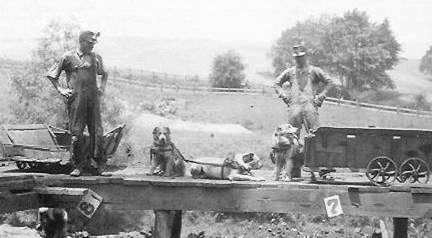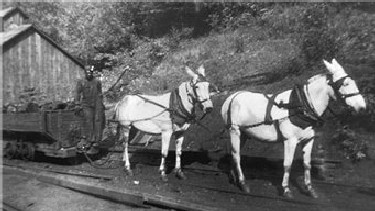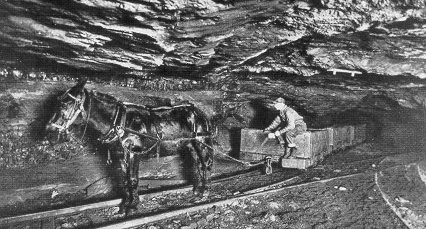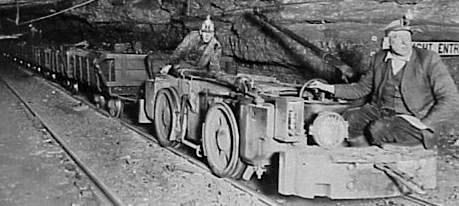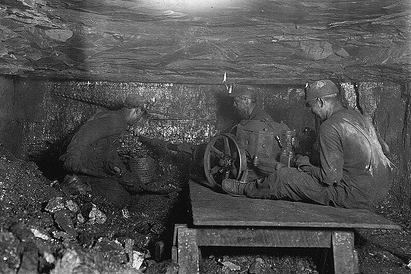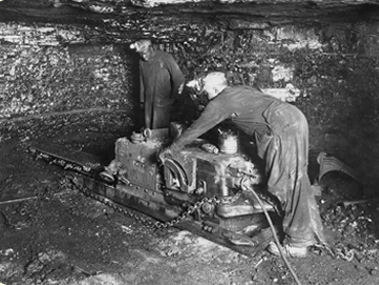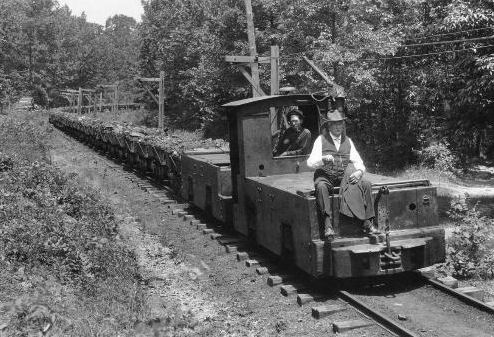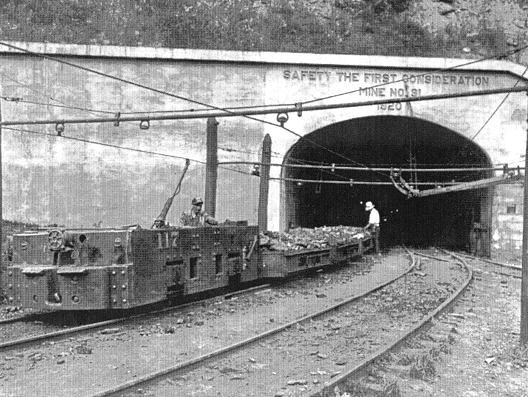
MINING THE COAL
Each miner was assigned a number which appeared on a metal tag that was taken off a board by the miner as he entered the mine and replaced on the board when he exited the mine. This let the company know how many miners And who they were that were in the mine at any given time. These numbered tags were known by numerous names such as Miner’s Checks, Check Tags, Pit Tags, Pit Checks, and Time Checks. Miners also carried brass tags with their number to hang on each coal car they filled and sent out to be weighed so that the weighman knew whom to credit with the mined coal.
Coal is found in veins, seams or beds, these can range in thickness from less than an inch to ten or more feet. Miners have worked coal veins where they had to crawl in order to move about and had to work laying on their side, as in the two photos at the right and below, where the coal vein is just 18 “ thick, notice the short handled shovel and coal picks. Coal veins where miners can stand to work and move about obviously make for much improved working conditions, as well as more profitable mining operations as the volume of coal available to be removed is far greater per foot of drift driven.
Miners waiting to enter the mine portal
In order for the coal to be blasted it needed to be undercut so that it would fall rather than being blown outward by the force of the blast. This was first done by miners lying on their side and chipping out a deep groove under the coal face with picks. Later, punchers and electric and air powered chain cutters (above right) were used for this work but they created a lot more coal dust than hand pick work. Once the coal face was undercut, holes were drilled for blasting and the charges were placed and detonated.
In order to blast the coal free, holes had to be drilled in which to place explosive charges. Coal, being relatively soft, could be dug out with a steel pick, drilled with hand-cranked spike, breast and post drills (above). Later, electric drills were utilized to drill holes for blasting, as seen in the 1950s photo on the lower right, before mechanized coal mining replaced this hand work.
Shooting, or blasting, the coal to facilitate its removal was first accomplished with black powder. The miner prepared individual charges for each hole drilled by pouring powder into paper cylinders prepared from rolls of blasting paper (left) or by using pre-made paper tamping bags. The charge was tamped into place with a tamping rod and a copper rod was used to pierce the charge. The miner used fuse or squibs to ignite the powder.
Black powder was replaced by dynamite, which required a blasting cap for detonation. A blasting cap was crimped on the blasting wire which was connected to an electric detonator (blasting machine). When the detonator handle was pushed down the dynamo created an electrical current that set off the blasting cap which set off the dynamite. The miner in the photo above right is crimping a blasting cap with his teeth, a very unsafe practice.
These miners are inserting charges into drill holes with tamping rods. In the photo on the right, the miner is holding the blasting wire in his right hand while tamping the charge with his left hand. In order to prevent premature explosions from sparks, the head of the tamping rod was copper rather than steel.
Once the coal had been shot it had to be loaded into coal cars to be taken to the processing plant where large chunks were broken up before it was washed and sorted by size. Loading coal was back-breaking physical labor. Smaller coal chunks were loaded with shovels while larger chunks were stacked by hand in the coal cars. Miners had to be careful not to load any waste rock with the coal. The entire car full of coal could be rejected by the weighman if he determined that there was too much rock mixed with the coal and the miner would not be paid for the entire car load. Obviously this system was open to much abuse by the coal companies. Once miners were no longer paid by the ton of coal mined but rather by the hour and electric powered loaders began to be used the in the 1947 lower right photo, the back-breaking physical labor was significantly reduced, although far from elminated.
Coal was first hauled within and from the mines by man or animal power as seen in the photos above. Notice the protective device on the head of the mule in the above left photo. Most animals used in the mines were better cared for than the miners, the company had to buy mules but they could just hire a new miner.
Generally boys too young to be miners and men unable to any longer do the physical labor of mining drove the mules and horses used underground and to pull the coal out of the drift mines. These indiviiduals were known , in the case of boys, as driver boys and in the case of men, drivers.
A black driver with two mules pulling loaded coal cars outside of the mine and a driver with one mule pulling 5 empty coal cars back to the workijng face to be loaded.
In low vein mines where horses and mules could not be used small ponies, dogs and goats pulled smaller coal car, or men bent over pushed them .
Beginning in the late last decade of the 1800s and early 1900s electric locomotives began to be used to replace man and animal power to move coal cars. These electric locos were faster and more efficient than animal and manpower in moving coal.
Arnold Mine, St. Bernard Mining Company, Earlington, Hopkins County, KY.
Undercutting a coal seam - Whitley Co., KY
Coal Puncher undercutting a seam - Elkhorn Coal Co.
Portal 31 - Lynch, KY
W.G. Duncan Coal Co. - Luzerne Co. KY
